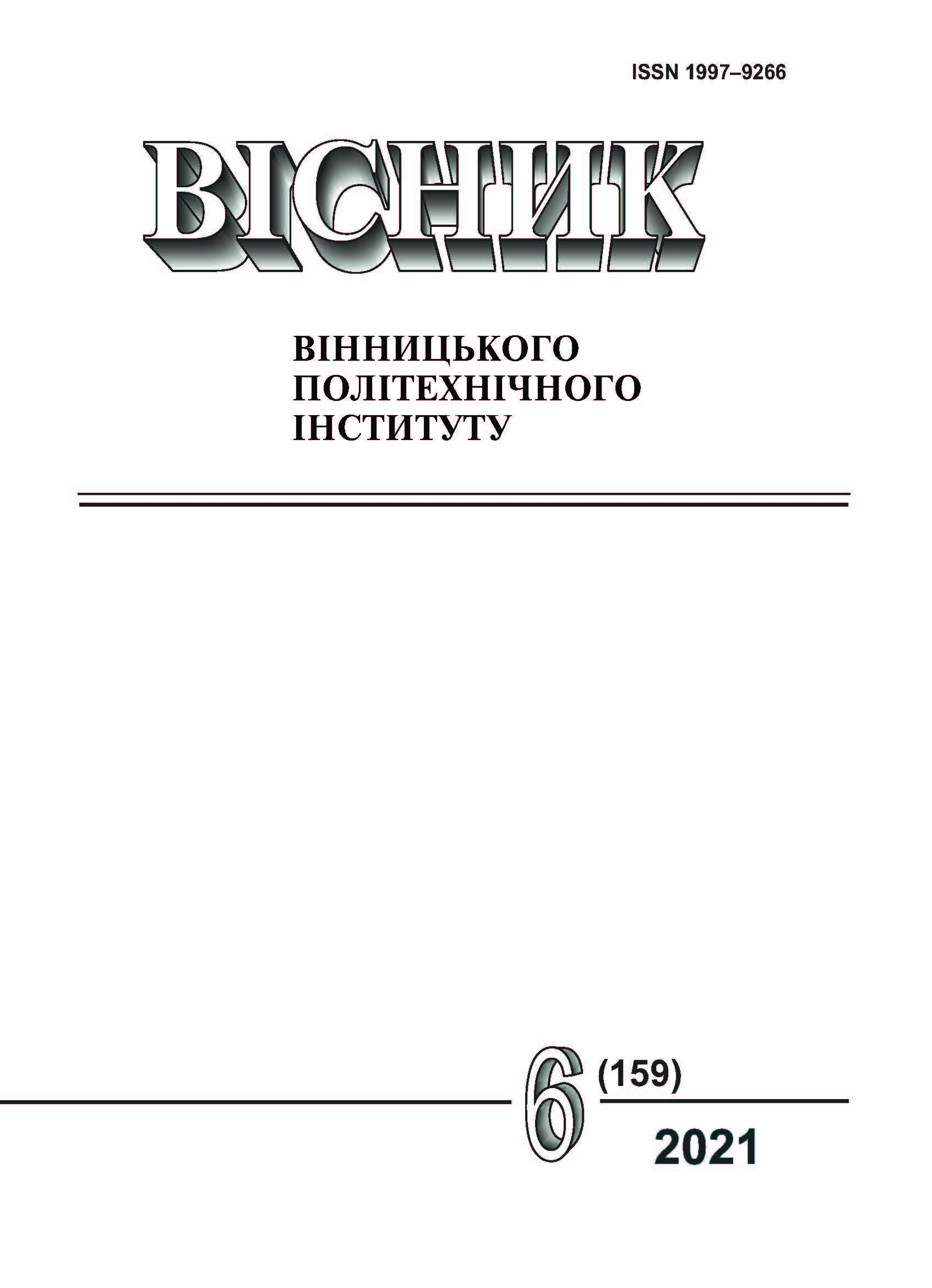ДОСЛІДЖЕННЯ ТЕПЛООБМІНУ В ОБ’ЄМІ ДВОФАЗНОЇ РІДИНИ ЗА УМОВ ВИМУШЕНОЇ ЇЇ КОНВЕКЦІЇ
DOI:
https://doi.org/10.31649/1997-9266-2021-159-6-14-20Ключові слова:
двофазна рідина, регулярний тепловий режим, нестаціонарний теплообмін, темп охолодження (нагрівання), коефіцієнт тепловіддачіАнотація
Відома доцільність використання методів регулярного теплового режиму за умов нестаціонарних теплових процесів в системі «навколишнє середовище — тверде тіло (набір твердих тіл)» для визначення теплофізичних параметрів твердих тіл та інтенсивності тепловіддачі.
Метою дослідження є встановлення можливості існування регулярного теплового режиму під час охолодження чи нагрівання двофазної рідини (фугату) в тонкостінній циліндричній посудині за вимушеної її конвекції.
Досліджено теплообмін в умовах як охолодження, так і нагрівання двофазних рідин за вимушеної конвекції стосовно можливості реалізації регулярного теплового режиму.
Експериментально встановлено, що на проміжку часу, в якому досліджено охолодження (нагрівання) фугату за умов його вимушеної конвекції у внутрішній тонкостінній посудині, має місце лінійна залежність, яка характерна для регулярного теплового режиму в твердому тілі.
Отримані експериментальні дані встановлюють доцільність застосовування теорії регулярного теплового режиму для визначення інтенсивності теплообміну до двофазних рідин під час охолодження (нагрівання) в умовах вимушеної конвекції. Подані результати розрахунку темпу охолодження (нагрівання), коефіцієнтів тепловіддачі. Встановлено існування регулярного теплового режиму в двофазній рідині.
Експериментальні і теоретичні дослідження проводяться для подальшого розвитку експериментально-розрахункового методу, потрібного для вивчення теплообміну середовищ з невідомою або частково відомою інформацією про теплофізичні властивості і реологічне поводження.
Результати розв’язання задач теплообміну в обмеженому об’ємі двофазної рідини можуть бути використані для виконання реальних технологічних завдань утилізації відходів харчової промисловості.
Посилання
С. І. Бухкало, О. І. Ольховська, В. О. Ольховська, і М. М. Зіпунніков, «Дослідження та аналіз інноваційних заходів з технологіі комплексної утилізації післяспиртової барди,» Вісник Національного Технічного Університету «ХПІ». Серія: Інноваційні дослідження у наукових роботах студентів, № 15, с. 66-74, 2019.
П. Породько, О. Осипенко, В. Таран, і В. Породько, «Ефективне використання відходу спиртового виробництва,» Харчова і переробна промисловість, № 1, с. 26-31, 2004.
М. Yatskov, N. Korchyk, and O. Prorok, “Developmen of technology for recycling the liquid iron-containing wastes of steel surface etching,” Восточно-европейский журнал передових технологій, № 2/6 (86), c. 70-78, 2017.
Н. М. Корчик, Н. М. Буденкова, і С. В. Кирилюк, «Розробка технологій переробки рідких відходів спиртового виробництва,» Science and Education a New Dimension. Natural and Technical Sciences, VII (25), issue: 206, pp. 38-41, 2019.
С. Й. Ткаченко, і Н. В. Пішеніна, Нові методи визначення інтенсивності теплообміну в системах переробки органічних відходів, моногр. Вінниця, Україна: ВНТУ, 2017.
Г. М. Кондратьев, Регулярный тепловой режим. Москва, Россия, 1954, 408 с.
В. П. Исаченко, В. А. Осипова, и А. С. Сукомел, Теплопередача, учеб. для вузов, изд. 3-е, перераб. и доп. Москва, Россия, 1975, 488 с.
М. А. Михеев, и И. М. Михеева. Основы теплопередачи, изд. 2-е, стереотип. Москва: Энергия, 1977, 344 с.
Переработка спиртовой барды. [Электронный ресурс]. Режим доступа: https://ecostar.by/index.php?option=com_content&view=article&id=64:spirtovaya-barda&catid=23&Itemid=45 .
##submission.downloads##
-
PDF
Завантажень: 157
Опубліковано
Як цитувати
Номер
Розділ
Ліцензія

Ця робота ліцензується відповідно до Creative Commons Attribution 4.0 International License.
Автори, які публікуються у цьому журналі, згодні з такими умовами:
- Автори зберігають авторське право і надають журналу право першої публікації.
- Автори можуть укладати окремі, додаткові договірні угоди з неексклюзивного поширення опублікованої журналом версії статті (наприклад, розмістити її в інститутському репозиторії або опублікувати її в книзі), з визнанням її первісної публікації в цьому журналі.
- Авторам дозволяється і рекомендується розміщувати їхню роботу в Інтернеті (наприклад, в інституційних сховищах або на їхньому сайті) до і під час процесу подачі, оскільки це сприяє продуктивним обмінам, а також швидшому і ширшому цитуванню опублікованих робіт (див. вплив відкритого доступу).





